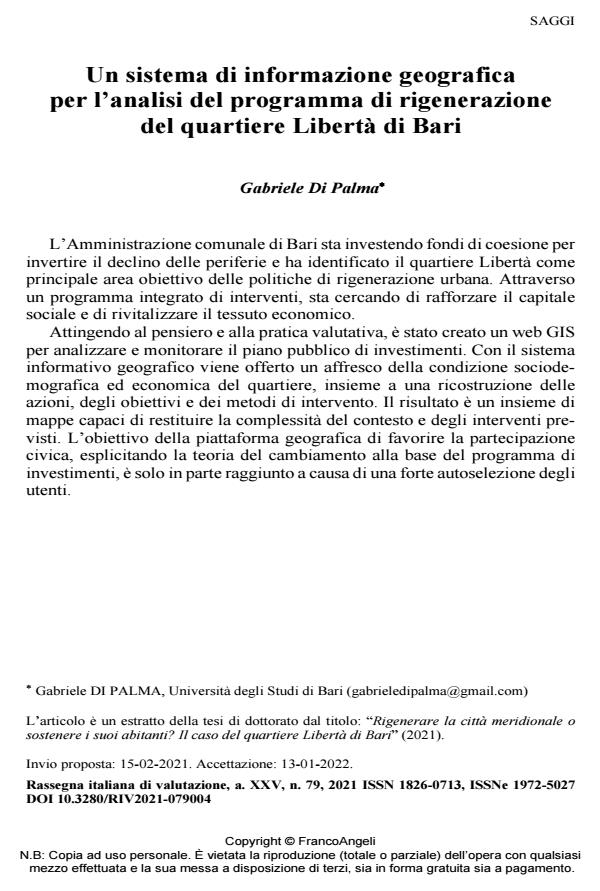Un sistema di informazione geografica per l’analisi del programma di rigenerazione del quartiere Libertà di Bari
Titolo Rivista RIV Rassegna Italiana di Valutazione
Autori/Curatori Gabriele Di Palma
Anno di pubblicazione 2022 Fascicolo 2021/79
Lingua Italiano Numero pagine 14 P. 60-73 Dimensione file 1754 KB
DOI 10.3280/RIV2021-079004
Il DOI è il codice a barre della proprietà intellettuale: per saperne di più
clicca qui
Qui sotto puoi vedere in anteprima la prima pagina di questo articolo.
Se questo articolo ti interessa, lo puoi acquistare (e scaricare in formato pdf) seguendo le facili indicazioni per acquistare il download credit. Acquista Download Credits per scaricare questo Articolo in formato PDF

FrancoAngeli è membro della Publishers International Linking Association, Inc (PILA)associazione indipendente e non profit per facilitare (attraverso i servizi tecnologici implementati da CrossRef.org) l’accesso degli studiosi ai contenuti digitali nelle pubblicazioni professionali e scientifiche
Gabriele Di Palma, Un sistema di informazione geografica per l’analisi del programma di rigenerazione del quartiere Libertà di Bari in "RIV Rassegna Italiana di Valutazione" 79/2021, pp 60-73, DOI: 10.3280/RIV2021-079004